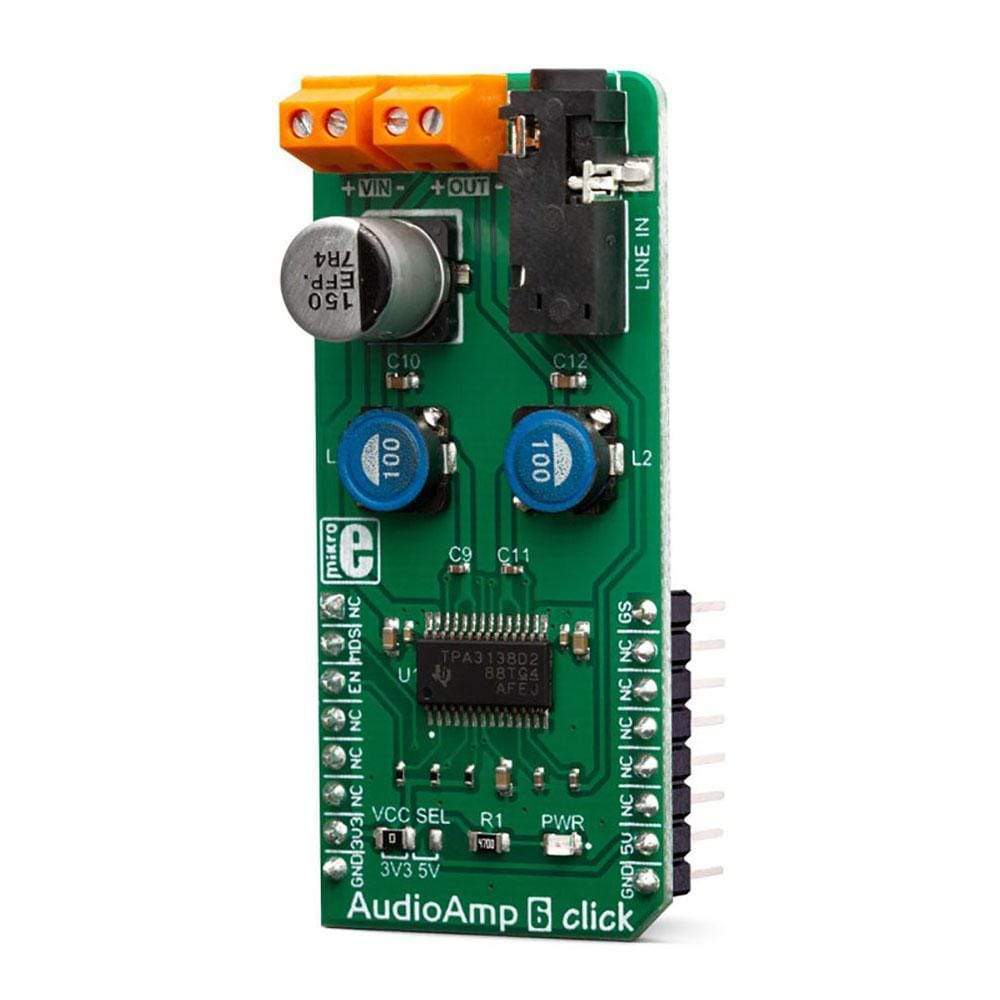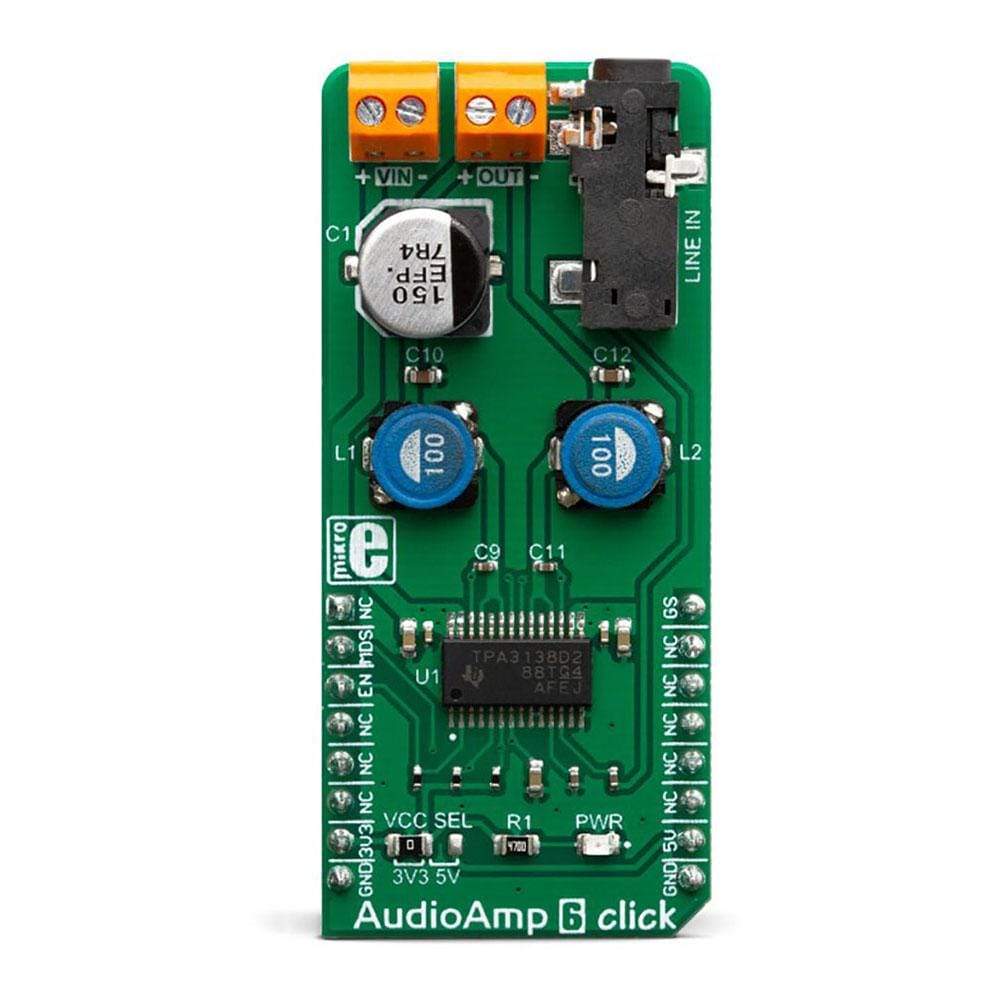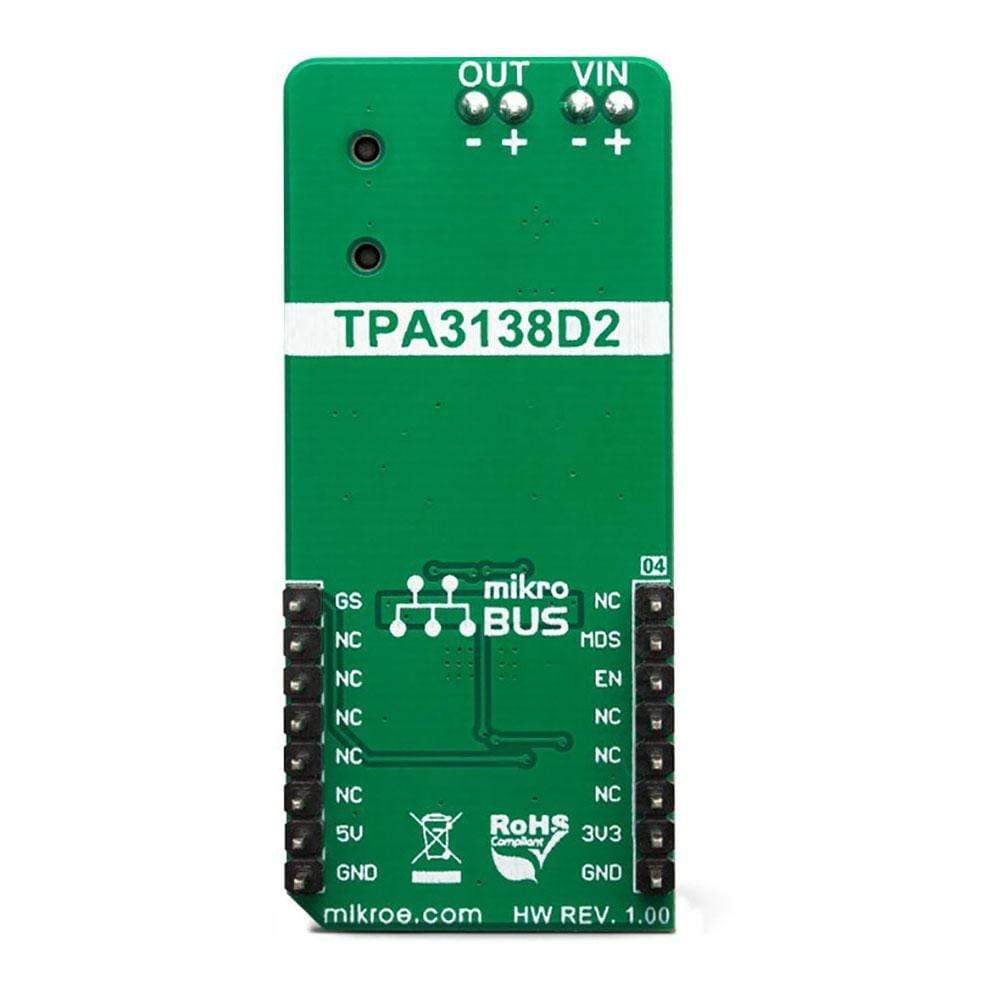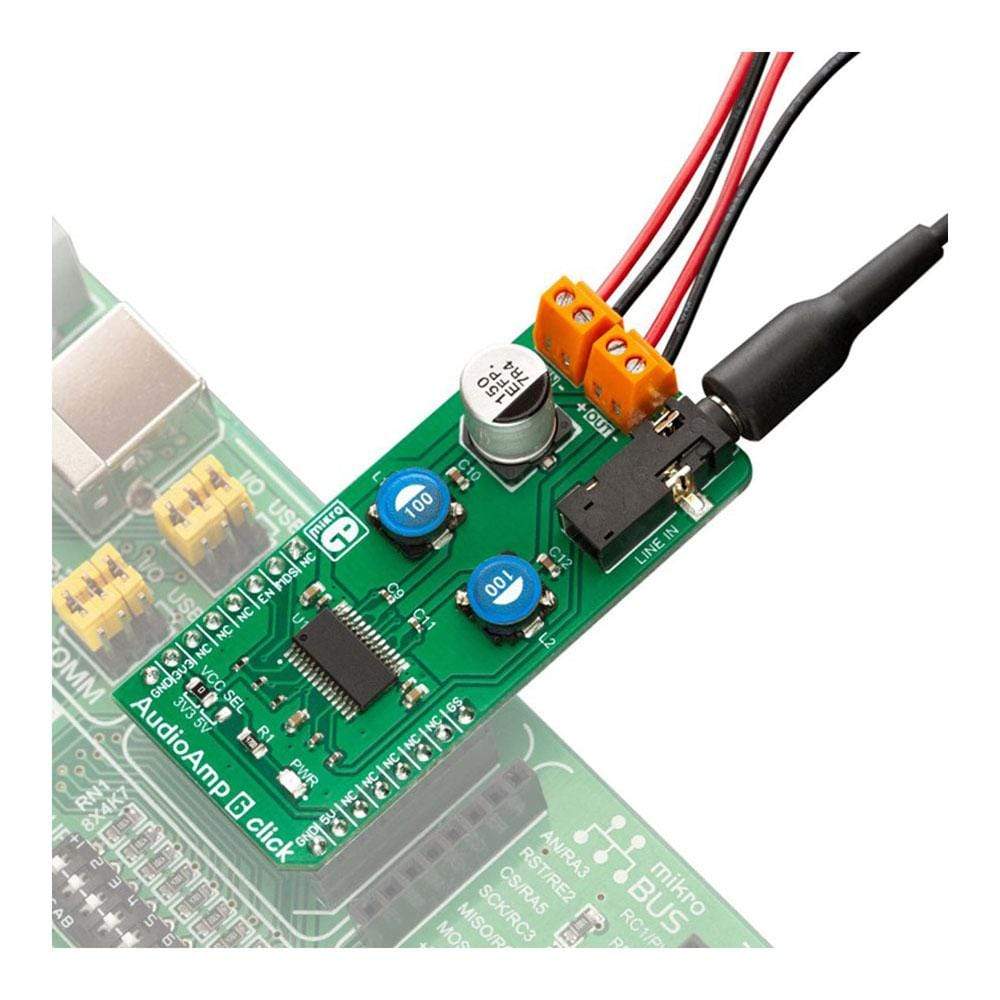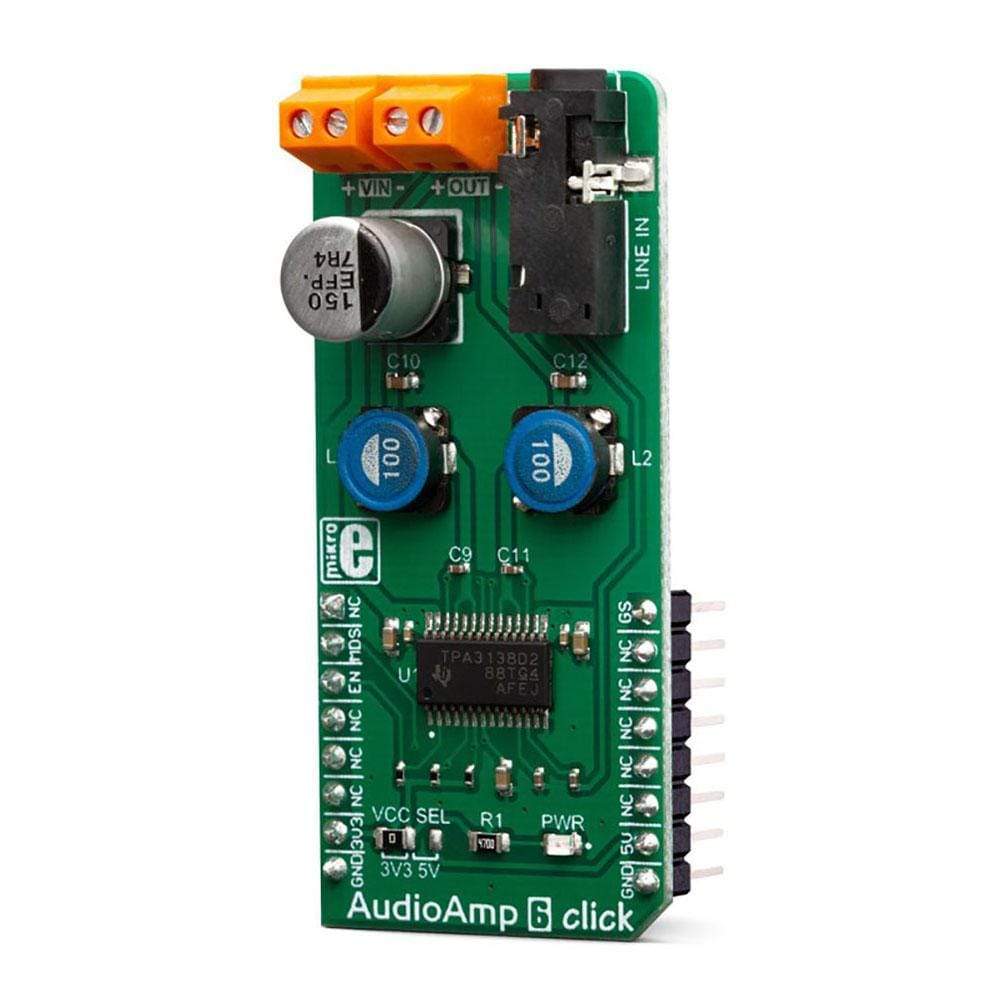
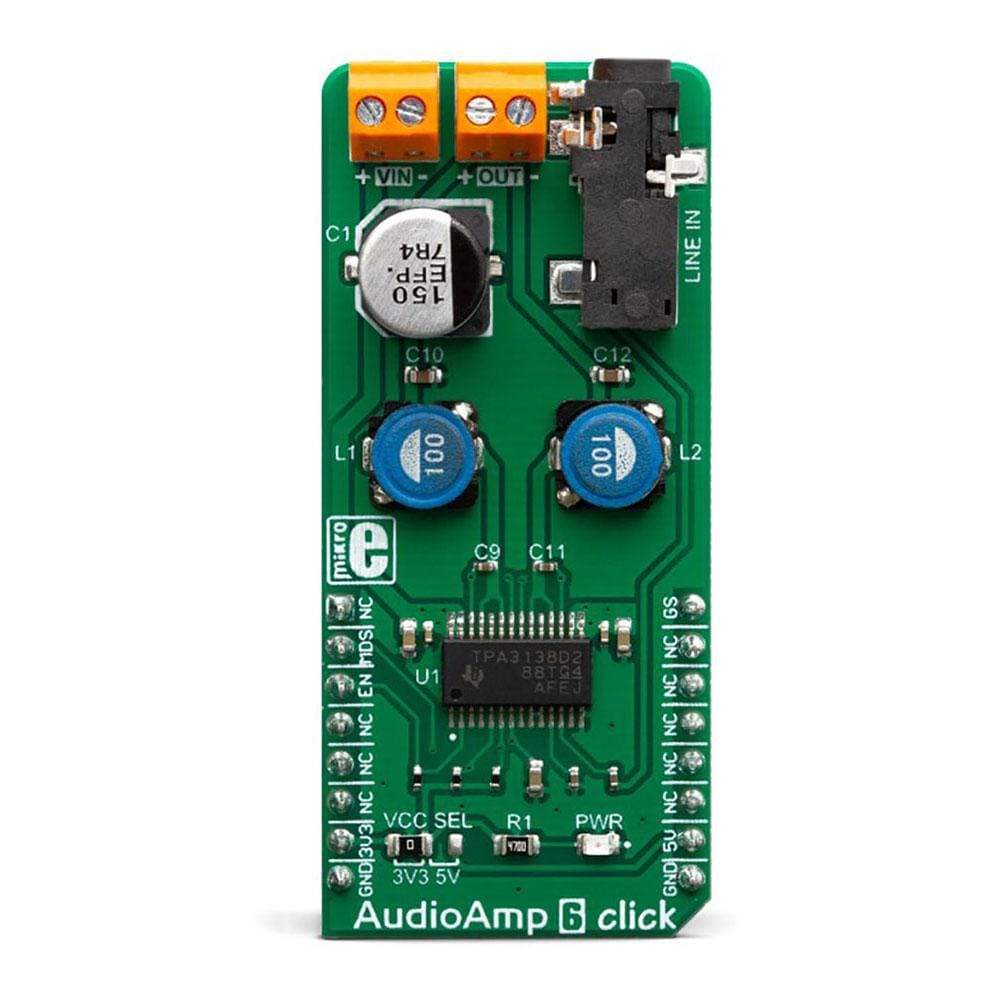
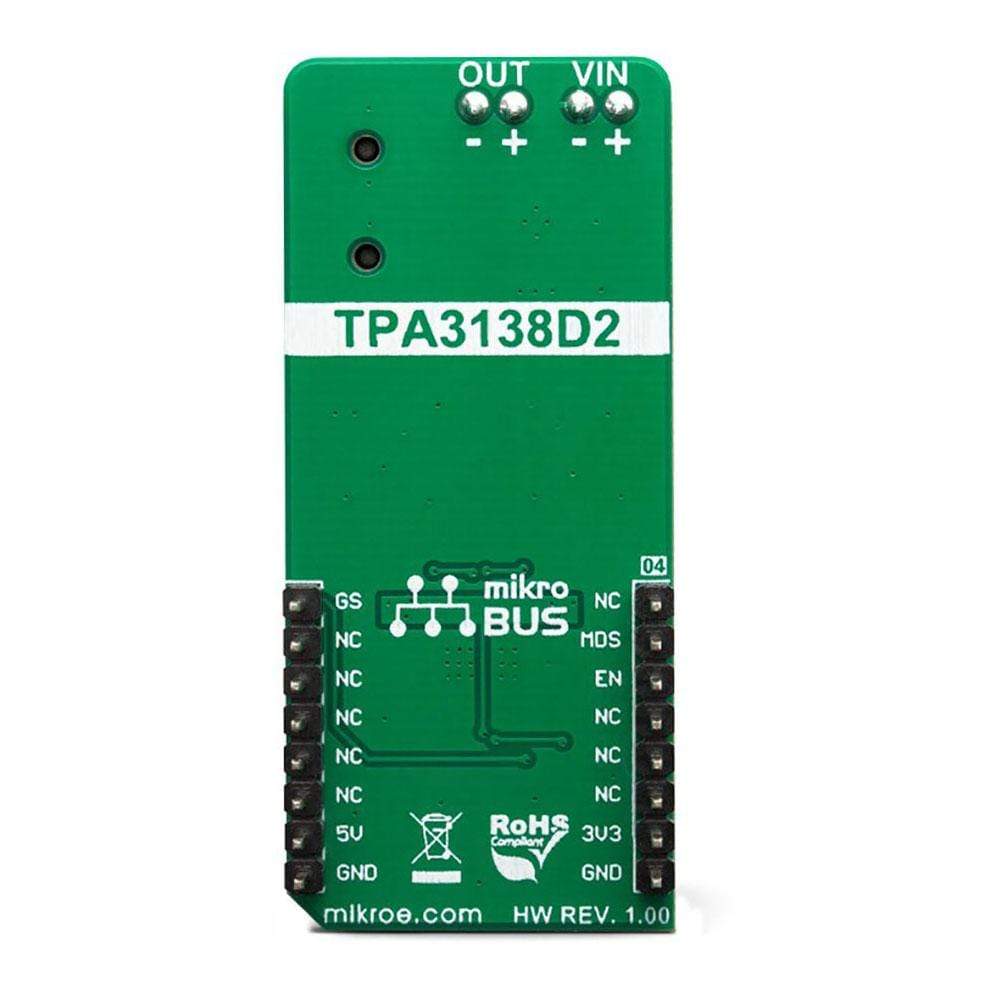

Key Features
Overview
The AudioAmp 6 Click Board™ is a mono/subwoofer audio amplifier, capable of delivering up to 18.5W with a 4Ω load. It is based on the TPA3138D2, a class-D integrated amplifier, which utilizes a highly efficient switching scheme. With about 20mA in idle mode, it allows for longer operation and improved thermal performance, making it a perfect choice for various battery-powered applications. Advanced EMI Suppression with Spread Spectrum Control allows using ferrite bead filters instead of bulky inductors, still maintaining the required EMC levels. The TPA3138D2 IC is equipped with a set of protection features, allowing a reliable operation.
Downloads
L' AudioAmp 6 Click Board™ est un amplificateur audio mono/subwoofer, capable de délivrer jusqu'à 18,5 W avec une charge de 4 Ω. Il est basé sur le TPA3138D2, un amplificateur intégré de classe D, qui utilise un schéma de commutation très efficace. Avec environ 20 mA en mode veille, il permet un fonctionnement plus long et des performances thermiques améliorées, ce qui en fait un choix parfait pour diverses applications alimentées par batterie. La suppression EMI avancée avec contrôle de l'étalement du spectre permet d'utiliser des filtres à billes de ferrite au lieu d'inducteurs volumineux, tout en maintenant les niveaux CEM requis. Le circuit intégré TPA3138D2 est équipé d'un ensemble de fonctions de protection, permettant un fonctionnement fiable.
| General Information | |
|---|---|
Part Number (SKU) |
MIKROE-3448
|
Manufacturer |
|
| Physical and Mechanical | |
Weight |
0.023 kg
|
| Other | |
Country of Origin |
|
HS Code Customs Tariff code
|
|
EAN |
8606018714957
|
Warranty |
|
Frequently Asked Questions
Have a Question?
Be the first to ask a question about this.

